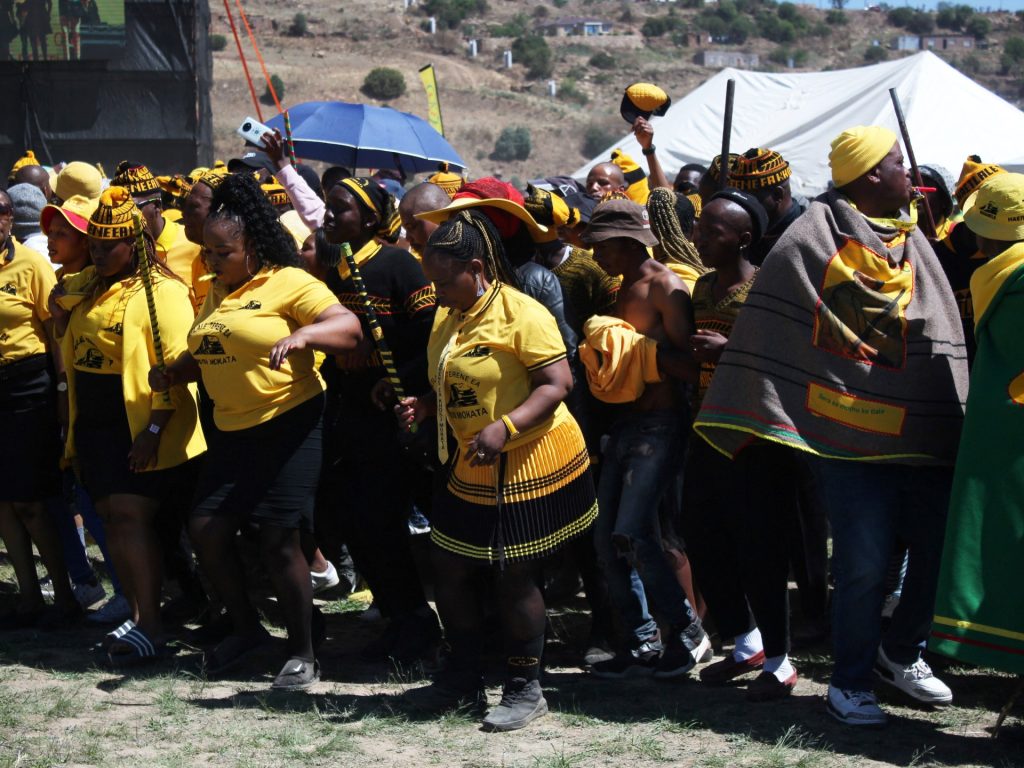Maseru, Lesotho—On a sunny afternoon, a white minibus taxi filled with 22 passengers departed from a busy Johannesburg bus station, heading toward Lesotho, the landlocked kingdom encased within South Africa’s borders. As the driver engaged the highway, he turned on the radio, and the soothing sounds of a solo accordion filled the air, marking the beginning of a popular Famo song. One passenger, dressed in stylish blue overalls, expressed his love for the genre, a sentiment echoed by many Basotho nationals onboard who eagerly bobbed their heads and sang along. Famo music, characterized by its fusion of traditional Southern African melodies with Western instrumentation, has its roots in the migrant mining communities of South Africa and has been a significant aspect of Basotho culture for a century. However, as the genre gained popularity, it also became entangled with violence and gang warfare, resulting in a ban on certain Famo groups deemed “terrorist organizations” by the Lesotho government.
The ban, initiated in May, targeted specific Famo groups associated with violence and rivalries, resulting in significant restrictions on performances. While enthusiasts like Thabelo, a taxi driver, mourn the loss of live shows, they continue to play Famo music privately. The government’s actions stem from a rise in violence connected to the genre, notably the shooting of two prominent figures attempting to quell the unrest, Khopolo Khuluoe (an award-winning Famo artist) and Pulane Macheli (a leading radio personality). The deaths highlighted the escalating dangers associated with Famo music, as incidents of murder linked to rival gang feuds proliferated, casting a somber shadow over what was once a celebratory medium.
Historically, Famo was a vehicle for cultural expression and storytelling. It originated in the slums of Johannesburg in the 1920s among Basotho migrant workers who sought solace in music as they frequented illegal drinking establishments. Over time, Famo tradition moved to Lesotho, where it became synonymous with the intimate settings of shebeens and significant cultural gatherings. Traceable connections also emerged between Famo violence and illegal mining in South Africa, where many gang members participate in hazardous mining activities. These operations foster an environment of fear, further complicated by the perception of “zama zamas,” the illegal miners associated with crime and violence. The peaceful border regions of Lesotho can suddenly be interrupted by incidents of gun violence linked to these rival factions, adding to the pervasive tension surrounding the Famo genre.
Many view the ongoing conflicts among Famo gangs as reminiscent of historic East Coast vs. West Coast hip-hop rivalries in the United States, with distinct geographical territories dictating safety and allegiances. Local journalist John Mokwetsi pointed out that differences often manifest between northern and southern districts, where a musician’s location can significantly affect their chances of survival during performances. Initially formed as burial societies to support local artists, these gangs devolved into violent entities motivated by insults directed at one another in evolving lyrical rivalries. This territorial violence has led to alarming murder rates in Lesotho, elevating the country to the sixth highest globally, as families often become collateral damage in these disputes.
The initiation schools prevalent in Lesotho serve as breeding grounds for new recruits into Famo gangs, drawing vulnerable young men from impoverished families. Promises of wealth and security, even in the face of potential death, draw boys into the fray, causing deep concern among communities. The government has actively pursued the issue through bans, yet many believe this only stifles the broader expression of Famo music rather than addressing its root causes, as voiced by emerging Famo artist Mantsali Julia Hantsi. Her efforts blend traditional elements of Famo with modern hip-hop to help restore a sense of positive narrative in a genre increasingly defined by its association with crime.
The infiltration of Famo gangs into various societal structures, including police and military, complicates the already fraught relationship between law enforcement and community safety. Public fear prevents many from reporting gang activities, and some agents of the state are believed to have colluded with criminal elements. In a context where cultural identity and traditional music have been intertwined with violence, individuals express a desire for a renewed appreciation of Famo’s heritage. However, as local opinion shifts against the gangs, the situation continues to evolve precariously, leaving the future of Famo music uncertain amidst the chaos it has increasingly come to embody.
While Famo remains deeply ingrained in the cultural fabric of Lesotho, the current atmosphere around it carries an undeniable stigma. As passengers in the minibus reflect on their love for the genre, they navigate a landscape where the joys of traditional music are now overshadowed by the violence and divisive gang culture it has spawned. The collective hope is that genuine artists can reclaim Famo as a means of storytelling and celebration rather than a conduit for violence, thereby ushering in a shift toward healing and unity within the community—an aspiration that echoes among those who still cherish the genre’s rich heritage.










